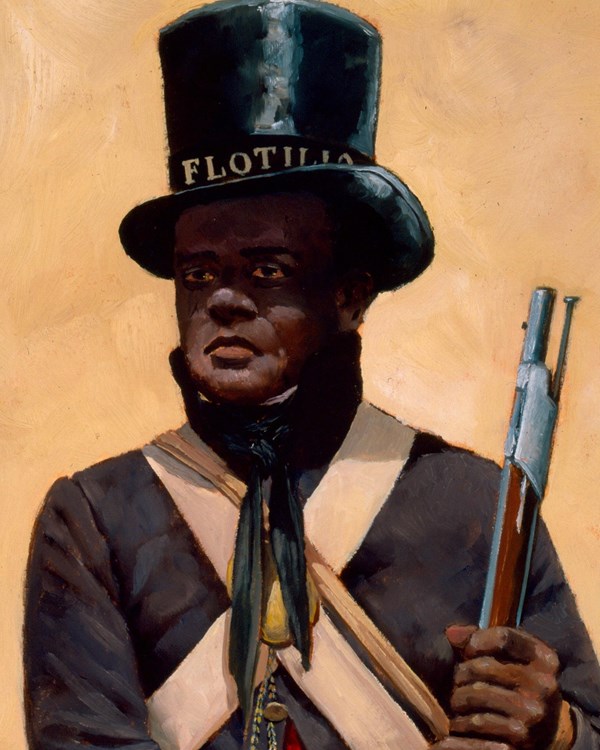Last updated: February 16, 2022
Person
Charles Ball

Charles Ball was born into slavery on a Maryland tobacco plantation sometime around 1781. He lived there with his mother and siblings until about 1785 when the owner’s death forced the estate to be sold up and the slaves sold away. Ball was sold to Jack Cox, a farmer with several slaves, who treated Ball “with humanity.” But at around age 12 following Cox’s death, Ball was sold again to a much more severe owner who furnished little food or clothing for his slaves, keeping Ball in a constant state of cold and hunger. When he was approximately 20 years old, around 1800, Ball’s master hired him out to the Navy.
When Ball arrived at the Washington Navy Yard, he was stationed as a cook aboard the USS Congress. For a hungry young man used to a hard life as a field slave, this hardly seemed like work at all. Ball was eager to please officers, and in turn was gifted with hand-me-down clothing and for the first time in his life some spending money. After nearly two years in the service of the Navy, Ball encountered a novelty – a free man of color and sailor from Philadelphia. Together, they devised a scheme to smuggle Ball to freedom in the North, but no sooner did they complete their plan than Ball’s former master returned to reclaim him and sell him again, eventually away from his family down to South Carolina.
After seven years in slavery in South Carolina, Ball escaped back up to Maryland to be closer to his family. Declaring himself a free man, Ball worked at small farms until war broke out in the Chesapeake. Although Ball could have secured his freedom by joining with the British and being evacuated from the United States, instead he chose to stay and enlist under Commodore Joshua Barney as a free man, attempting to convince other escaped slaves to stay in the United States and fight rather than defect to the British. Ball served as a seaman and a cook in the Chesapeake flotilla, serving at the Battles of St. Leonards Creek and Bladensburg. In his 1837 memoir, Ball reflected on the Battle of Bladensburg: “I stood at my gun, until the Commodore was shot down… if the militia regiments, that lay upon our right and left, cold have been brought to charge the British, in close fight, as they crossed the bridge, we should have killed or taken the whole of them in a short time; but the militia ran like sheep chased by dogs.”
After the war, Ball remained in Baltimore, living as a free man and eventually purchasing land for a home. This peace would be short, however: in 1830, he was seized as a fugitive slave and sold to a plantation in Georgia. Although he eventually escaped and returned to the north, living outside Philadelphia, he never was able to reunite with his family.
